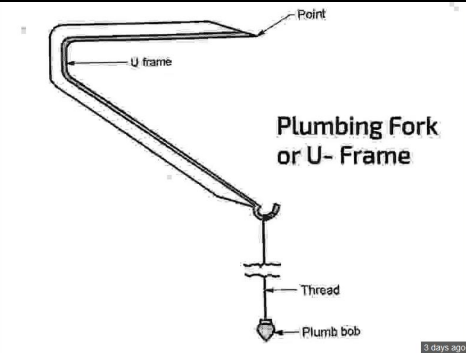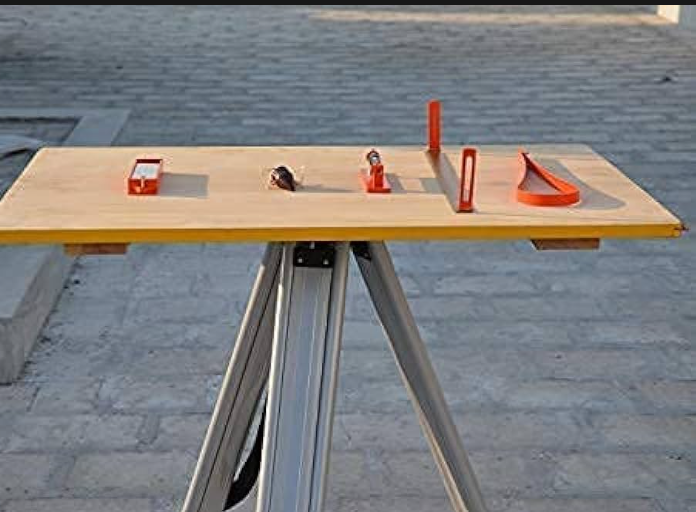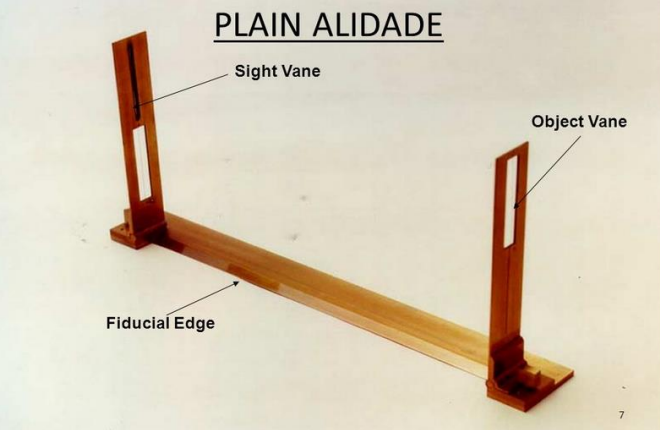Introduction to Plane Table Surveying
Plane table surveying is a graphical method of surveying and we can plot maps directly drawing on site. This makes this method popular. Now it is used for small or medium work where higher accuracy isn’t needed. Plane table surveying gives approximate data.
The principle of plane table surveying is parallelism. It simply means that we are using the Alidade, which is used to draw lines on the drawing sheet, parallel to the sightline.
Pros and Cons of Plane Table Surveying
Pros of Plane Table Surveying
- Drawing could be prepared while surveying. This will save time for plotting field data on the drawing sheet.
- There is no need to maintain the field book.
- This is less costly than theodolite survey.
- There is no chance of committing any measurements since the map is prepared on the ground.
Cons of Plane Tabling
- In the rainy season, plane tabling is not possible.
- Plane Table Surveying could be done only in day time, at night it is not possible to carry out surveying.
- Surveyor needs to carry a lot of instruments along with him.
- It is an approximate method and hence couldn’t be used for a big project.
- As in the case of Plane Tabling, no field data is recorded, and it would be difficult to reproduce the map.
Instruments Used in Plane Table Surveying
Plane Table
It consists of a drawing board attached to a tripod stand. There are many types of plane tables available in the market.
- Simple Plane Table
- Johnson Plane Table
- Coast Survey Table
Alidade
It is used to sight the object and draw the lines on the drawing sheet. There are two different types of alidade.
- Plain Alidade
- Telescopic Alidade
Spirit Level
It is used to level the plane table. Spirit Level is also known as Tube Level.
The sensitivity of spirit level depends many things.
- Viscosity – The lower the viscosity of fluid used in spirit level, the higher the accuracy, and vice versa.
- Radius of Curvature: The sensitivity is directly related to the radius of curvature of the vial. A larger radius means higher sensitivity, as the bubble moves more easily with smaller changes in angle
Trough Compass
It contains a magnetic needle casing in a wooden or non-metallic box. It is used to locate the north-south direction.
U Fork or Plumbing Fork
U fork is used for centering of the Plane Table. U Fork is attached with a plumb bob at the one end and another end is to be kept at the center of the drawing sheet for the centering of the Plane Table.

Methods of Plane Tabling
There are four well-known and conventional methods, though still used to do surveying with a plane table.
- Radiation
- Intersection
- Traversing
- Resection
Each of the above is explained below.
Radiation
This method is most suitable when all the distances to be measured are small and readings should only be taken from one location.
Intersection Method
This method is suitable for locating inaccessible points from the two well-known positions on the ground. This method is useful for accurately locating points that are difficult to measure directly, such as the tops of hills or buildings.
Traversing Method
This method is used to connect the station of an open or closed traverse.
Resection Method
Resection is the general term used for the process of determining the location of the station occupied by the instrument. There are 4 ways to employ the resection method
- Compass Method
- Back Ray Method
- Two-Point Problem
- Three-Point Problem
Objectives of Plane Table Surveying
- To prepare a detailed and accurate map while taking observation.
- To determine the distances, angles, and directions of various points on the ground.
- Establishing control points and reference marks on the ground for future surveys.
Read Also-
Basic Principles of Surveying | Fundamental Civil Engineering
Highway Alignment and its Requirements
Types of Surveying (A Comprehensive Classification)
Types of Chains Used in Surveying
FAQs
The straight working used to draw lines in alidade is called the fiducial edge of the alidade.
Plane Table Surveying works on the principle of Parallelism.

